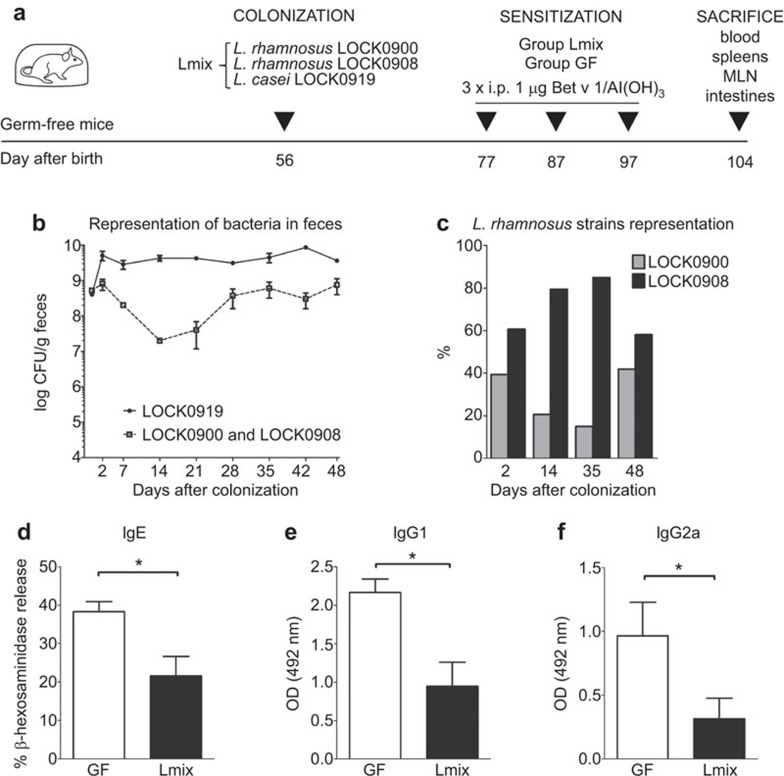Figure 4.
Sensitization of GF and Lmix-colonized mice with the major birch pollen allergen Bet v 1. (a) The experimental design was as follows: 8-week-old GF mice (n=12) were divided into two groups. The first group (Lmix) received an equal-part mixture (2×108 CFU/ml) of L. rhamnosus LOCK0900, L. rhamnosus LOCK0908 and L. casei LOCK0919 by intragastric tubing. The second group was kept GF. Mice were sensitized three times intraperitoneally with recombinant Bet v 1 (1 µg in alum) on days 77, 87 and 97. One week after the last immunization (day 104), tissue samples were collected for further analyses. Bacterial colonization of the Lmix-colonized mice was evaluated on the first 2 days and then at weekly intervals throughout the experiment. At the species level, bacteria were distinguished based on colony morphology by the cultivation of appropriate serial dilutions of the fecal samples. (b) L. casei LOCK0919 (full circles, solid line), L. rhamnosus LOCK0900 and LOCK0908 (open squares, dotted line). L. rhamnosus strain-specific discrimination was performed by qPCR using DNA isolated from the fecal samples at the indicated time points (c) L. rhamnosus LOCK0900 (gray bars) and L. rhamnosus LOCK0908 (black bars). The data are shown as a percentage of each strain out of all detected L. rhamnosus bacteria on the indicated day after colonization. Bet v 1-specific antibodies were measured in the sera of GF (white bars) and Lmix-colonized mice (black bars). IgE was measured by Bet v 1-mediated β-hexosaminidase release from rat basophil leukemia cells (d). Levels of IgG1 (e) and IgG2a (f) were evaluated by ELISA and expressed as OD units. The data are shown as the mean±s.e.m. One representative out of two experiments is shown; n=6/group. *P<0.05 and **P<0.01. GF, germ-free; Ig, immunoglobulin; i.p., intraperitoneally; Lmix, Lactobacillus mixture; OD, optical density.

